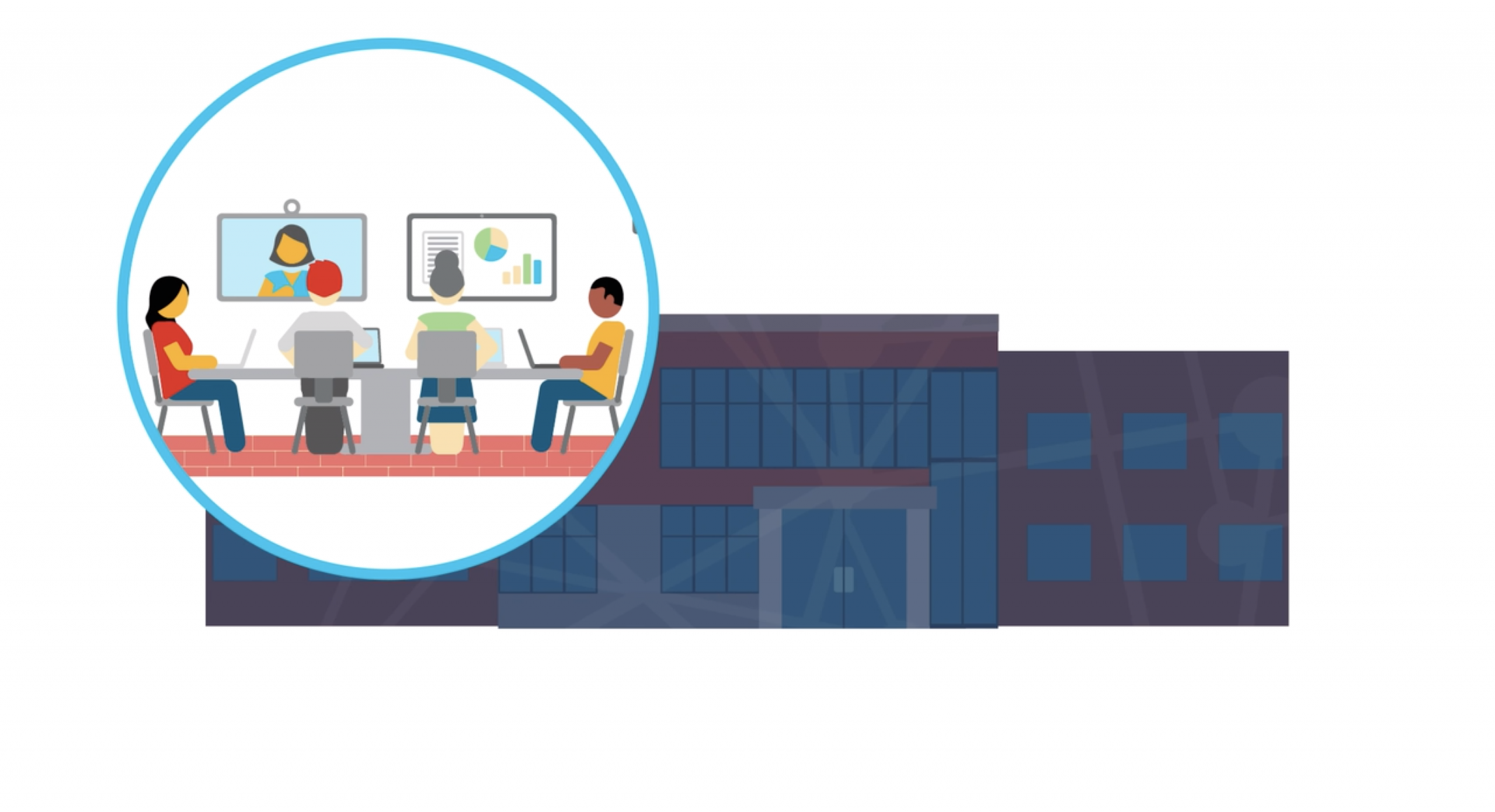Join us this week for the third and final blog in the Transition to Hybrid Learning mini-series of #EducationNow.
“Roads? Where we’re going, we don’t need roads.”
Dr. Emmett Brown, Back to the Future
That famous last line from Back to the Future is more pertinent now than ever. We are moving toward hybrid education, and there is no one road to get us there.
We’ve accepted that we need to tailor education to the nuances of digital learning. We’ve learned that it’s time to accept augmentation as a staple of digital learning. And now, we propose hybrid education as the road forward. Hybrid education will not only ensure that school campuses can open safely and cope with disruption, but it will also guarantee that students and faculty can successfully complete their education anytime and anywhere.
The ability to have a digital twin for every physical class is within our reach. But sorry? You want it by when? By fall? Great Scott!

Building a Hybrid Future
Just as we transitioned from physical learning to virtual learning this spring, we now need to transform our virtual learning systems to hybrid learning systems. This journey is complex: one that would be difficult to complete in years let alone months.
To create hybrid physical and virtual spaces, universities and schools must embrace change. Learners and educators will need to adjust to the concept of hybrid learning and the use of both asynchronous and synchronous classes (e.g. face to face, simulcast, video conference, and on-demand). The academic development programs launched during the past four months to help faculty adjust to new means of pedagogy have benefited instructors – now these courses must pivot to address hybrid instruction.

Empowering Digital Learners
The pandemic has shown us that digital learners do not excel when online learning means watching a 45-minute lecture recorded by the teacher the night before. Nor do they thrive when the teacher leverages collaboration tools only to deliver the class without inviting collaboration. Now, we face a new learning curve with hybrid education.
The next generation of students embraces short video formats with augmented and embedded content in their daily life, like Snapchat and TikTok. These augmented forms of content can transform the classroom. Today, in this new hybrid model, we have the opportunity to embrace new methods of grading, testing, and assessment that utilize a wider variety of media and tools.

Driving Collaboration
Collaboration vendors are innovating at a record pace. Features have been fast-tracked to deliver simplified plug-and-play integration with collaboration tools. By leveraging more user-friendly, intuitive LMS-integrated web conferencing like Webex, faculty and students can make strides in deploying hybrid models. Hybrid learning uses advanced collaboration to allow for simplified assignment submission, more efficient study groups, more convenient office hours, and better faculty guidance. Full integration allows visual and audio submission like TikToks or podcasts in secure persistent collaboration spaces like Webex Teams. Teachers and students will come together in the physical classroom via endpoints, interactive screens and student mobile devices and in the virtual via web and mobile platforms.
For example, a student can open the collaboration space within a class, study group, or with a tutor or teacher to upload short videos, photos, or written materials for review. Every submission is time-stamped, archived in the hybrid space, and replicated to a chosen document management platform (like Google Drive, OneDrive, Box) or the media library (e.g. Vbrick or Safari Montage). Assignments can be submitted as a link, chat or email message, or through the course dashboard via the LMS. A teacher can bring up content and share it to all students via the collaboration tools: simultaneously sharing it to the class AV system, every student device, and remote participants.
Hybrid education requires the true merger of asynchronous and synchronous teaching methods for its true value to be realized. For example, embedded A.I. can assist the educator and the student by creating a live, timestamped transcript. Artificial intelligence, like Cisco’s Webex Assistant, can also provide Closed Captioning and translation in real-time, take notes, and even automatically create a lesson summary. All students can obtain a written version of the class from the collaboration space or the LMS. Now, consider a dyslexic student delivering a video explanation for a science project. The Webex Assistant will produce a written submission for them. This real-time transcript – with the potential to be translated or have key points – is a true example of augmented learning.

The Future Starts Now
Imagine – using remote end video controls, a sculpture teacher can inspect the technical elements of a student’s artwork by zooming in and around the piece. Imagine the Integration of a microscope with power workstation VDI so that lab equipment with Ultra High Definition can be share live across research labs, physical labs, and STEM classes. Innovation with collaboration jumpstarts the journey to hybrid education.
Moving to a hybrid model means adapting teaching practices and the tools we teach with. Technology from vendors like Cisco enables innovative evolution. But evolution takes time. Education institutions need to plan to adapt what they can in the next 70 days, to truly succeed in the next 1000.
We’ve talked a lot about the transition to distance learning. We’ve learned from the past. Now – it’s time to get back to the future of education. So, buckle up, because we don’t need a road to hybrid learning – we’re building it.
Continue on the #EducationNow journey with new stories of innovation from around the world next week.




BUEN DIA, SOY SILVIA PROFESORA DE EDUCACION FISICA, COMPROMETIDA CON MI VOCACION Y UN MUNDO MEJOR, ESTOY TRATNDO DE DARLE (COMO DECIMOS EN ARGENTINA) UNA VUELTA DE ROSCA A SU PROPUESTA, PARA PODER SACARLE PROVECHO, ADEMAS SIEMPRE PRESENTE UN PROYECTO DE SOLIDARIDAD EN EL CICLO LECTIVO, DONDE LOS ESTUDIANTES PROPONEN Y VOTAN, PARA LLEVAR ADELANTE UN DETERMINADO PROYECTO. ESPERO ESTEN BIEN. SALUDOS.